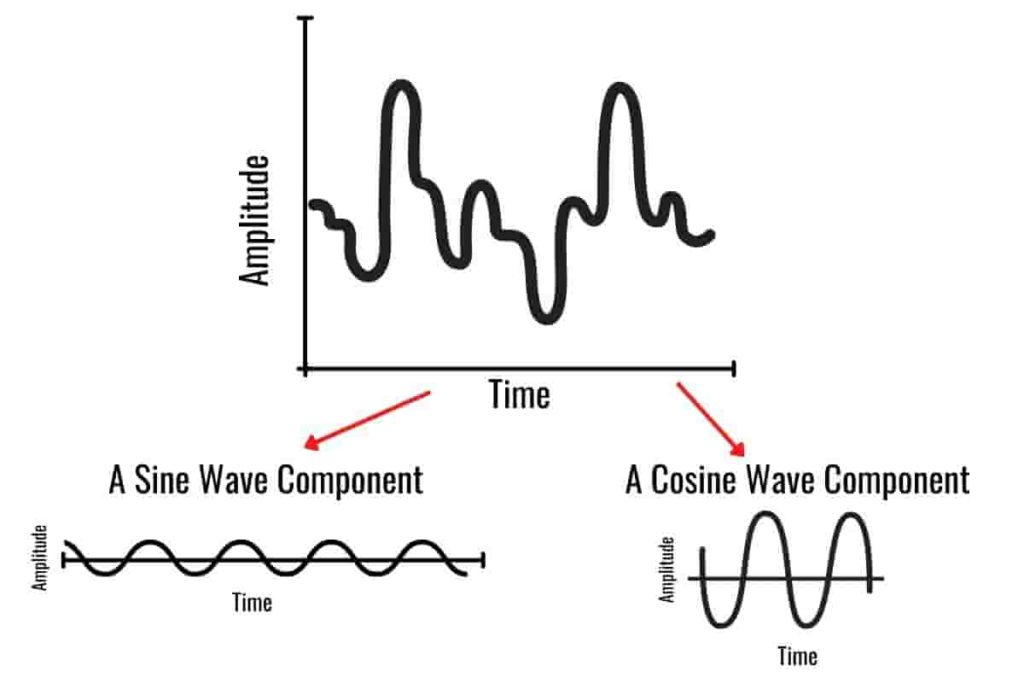What Is A Time Series?
A time series is a sequence of data points measured at successive points in time. Time series data are often plotted as a line on a graph, with time on the x-axis and the value of the series on the y-axis.
A time series can be considered to be a set of data points indexed (or listed or graphed) in time order.
Time series analysis comprises methods for analysing time series data in order to extract meaningful statistics and other characteristics of the data.
Time series data is very important in signal processing, and time series analysis is a fundamental tool for signal processing applications.
Some of the most common signal processing tasks involve analysing time series data to extract information about the underlying signals or to denoise the data.
What Is A Signal?
Signals are a type of time series, as a signal is a time-varying quantity that conveys information.
Signals can be electrical, mechanical, acoustic, or electromagnetic, for example.
In many cases, a signal is composed of multiple component frequencies (or tones) that are mixed together.
The two properties of signals are:
- Amplitude
- Frequency.
Signal processing is the process of extracting information from signals. This involves manipulating the signal in some way.
What Is The Fourier Transform?
The Fourier transform is the decomposition of a signal into sines and cosines.
For example, take the following signal. It can be decomposed using the Fourier Transform into sine and cosine waves.
This image is not an actual Fourier Transform, just a diagram for illustrative purposes.

When it comes to signal processing, a very simple way to remember the Fourier Transform is that it changes the x-axis Time into Frequency.
In other words, the Fourier transform is a mathematical operation that converts a time-domain signal into its frequency components.
The Fourier transform is used to analyse signals and to extract information about the frequencies present in the signal.
What Is The Discrete Fourier Transform?
Before jumping into this, it is best to explain what we mean by “discrete”.
What Is A Discrete Signal?
A discrete signal is a signal that is composed of a finite number of data points. A discrete signal can be represented as a sequence of numbers.
In simple terms, it is easiest to think of a discrete signal as having a finite set of quantities.
What Is A Continuous Signal?
In contrast to a discrete signal, a continuous signal has an infinite set of quantities.
For example, the number series, [2, 6, 12, 14, 32] is a discrete signal. There are only five numbers in the signal. The number is finite and absolute.
In contrast, the numbers between 2 and 32 are continuous. There are many numbers, for example, 2, 2.11, 2.225, etc….it is continuous.
The Discrete Fourier Transform Explained
When dealing with time series data, the version of the Fourier Transform needed is the Discrete Fourier Transform.
The discrete Fourier transform is a mathematical operation that converts a discrete signal into its frequency components.
Just like our explanation of a discrete signal, the input data is measured at discrete intervals.
The input to the discrete Fourier transform is our discrete signal (one value per time step) and the output is one value of amplitude for each frequency.
In summary, each output value has a corresponding strength per specific frequency.
What Is A Time Series Object?
When working with time series, particularly if you are working with programming code and MatLAB, you may come across the term “time series object”.
According to the definition of a time series object from MathWorks: [source]
A timeseries object contains data and time information within its properties that describes a dynamic process. You can use
MathWorkstimeseriesobject functions to create, modify, and analyse the behaviour of a time series.
In other words, a time series object is an object that represents a time series. A time series object can be used to store data points, calculate statistics, and perform other operations on the time series data.
Final Thoughts
At first, it can be hard to get to grips with what a time series is, how it works with signals, and how the Fourier Transform is used to change data from the time to the frequency domain.
Having a very basic comprehension is a good place to start.
Once you understand the fundamental concepts, then it is a good idea to move on to understanding the maths.
